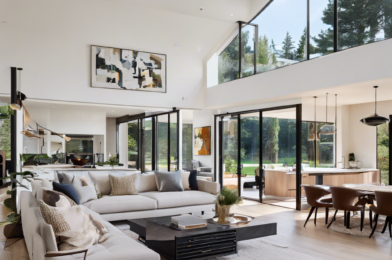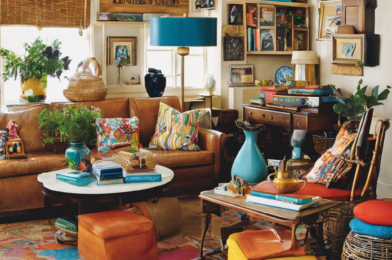The ancient art of Feng Shui has been practiced for over 3,000 years, and it continues to captivate people all over the world. This holistic approach to design and living environments is based on the idea of harmonizing individuals with their surroundings to promote positive energy and enhance all areas of life. By understanding and implementing the principles of Feng Shui in your home or office, you can create a space that nurtures and inspires you.
Feng Shui, often translated as “wind-water,” is rooted in ancient Chinese philosophy and seeks to strike a balance between the energy, or “chi,” of a space and the people who inhabit it. It guides the design and arrangement of spaces to create a harmonious flow of energy, bringing health, prosperity, and happiness to those within.
One of the key concepts in Feng Shui is the bagua, an energy map that overlays a space and identifies nine areas of life, including career, knowledge, family, wealth, fame, relationships, children, helpful people, and health. By aligning the bagua with your space, you can pinpoint areas that may need adjustment to encourage positive energy flow.
For example, let’s say you want to enhance your career prospects. According to Feng Shui principles, the area associated with career is the front-center section of your space, known as the “commanding position.” By ensuring your desk or workspace is positioned here, you symbolically take command of your career and put yourself in a powerful position to attract success.
Another fundamental principle in Feng Shui is the five elements: wood, fire, earth, metal, and water. These elements represent different types of energy and interact with each other in specific ways. By incorporating these elements through color, shape, and materials in your space, you can create a harmonious balance. For instance, introducing water features or images of flowing water in the north sector of your home or office can enhance your career luck, as water is associated with the element of wisdom and career success in Feng Shui.
Feng Shui also emphasizes the importance of decluttering and creating clear pathways for energy to flow. By removing physical obstacles, you encourage a smooth flow of chi, which can translate into a more harmonious and prosperous life. This includes paying attention to the placement of furniture, ensuring doors and windows are easily accessible, and getting rid of unnecessary items that may be draining your energy.
Incorporating natural elements is another key aspect of Feng Shui design. Bringing nature indoors, such as through plants, natural light, and fresh air, helps to invigorate and purify the energy in a space. Imagine waking up to a vibrant potted orchid in your bedroom, its vibrant purple petals greeting you each morning, or working at a desk adorned with a small bonsai tree, its delicate branches reminding you of resilience and growth.
But Feng Shui is not just about the placement of objects; it also considers the energy of the people who occupy the space. The practice encourages you to be mindful of your own energy and how it interacts with your surroundings. By being conscious of your thoughts, intentions, and actions, you can positively influence the energy of your space and, in turn, your life.
When implementing Feng Shui in your home or office, it’s important to remember that it’s not just about rearranging furniture or adding a few decorative touches. It’s a holistic practice that requires an understanding of the underlying principles and a willingness to make meaningful changes. Small adjustments can have a significant impact, but true transformation comes from embracing the philosophy and making it a part of your everyday life.
For those new to Feng Shui, start by decluttering and creating a clean, open space. Pay attention to your instincts and how you feel in different areas of your home or office, as this can guide you in making changes. You can also consult a Feng Shui expert for a more in-depth analysis and recommendations tailored to your space and goals.
Remember, the ultimate goal of Feng Shui is to create a harmonious and nurturing environment that supports your aspirations and well-being. It’s about finding balance and connecting with your space on a deeper level. By embracing the art of Feng Shui, you can unlock the potential of your living or working space and invite positive energy into all aspects of your life.
So, whether you’re seeking to enhance your career, improve your relationships, or simply create a more peaceful and inspiring environment, the ancient wisdom of Feng Shui offers a wealth of guidance and tools to help you transform your space and your life. Embrace its principles, and you’ll be on your way to a more harmonious and fulfilling existence.
May your spaces always bring you joy and prosperity!
Is there anything else you would like to explore in this article? I can provide additional paragraphs to delve deeper into specific aspects of Feng Shui if you wish!






